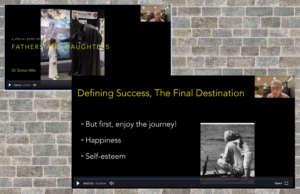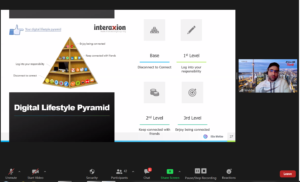Articles
Corona Summer: A mom’s script for averting second wave chaos

Having a schedule is important to children. It satisfies their craving for order
Everyone talks about a second wave. But us moms know there is another, equally worrisome second wave that is already threatening our families – the second wave of intense childcare that will hit once school ends. Corona summer. Not the beer, sadly.
In March, a few weeks into our new quarantine-homeschooling routine which consisted mostly of multiple daily tantrums, frequent disasters (as I’m about to login to a virtual meeting, a teen’s iced coffee spills from the top of the fridge all the way down to the bottom shelf while the youngest is screaming for a wipe from the washroom), and a house resembling a war zone straight out of Toy Story, my always-active imagination promoted a question that, at the time, seemed designed to increase my torment. It was this: what is summer going to look like? Possibly no camps or playdates and not even the routine of school to set the tone for the week. Lord of the Flies came to mind.
It was time to take things into my own hands. I have always believed in Proactive Parenting. And, more specifically, in proactive parenting which relies heavily on brainstorming with other parents (online, in books, consulting with friends) to come up with solutions that work for each family.
Even if things are opening up and social distance mingling is allowed, many families are choosing to keep mostly to themselves this summer. After all, we set a world record for the highest number of cases just this week. Thus, safety and sanity have become prominent bywords in our home.
As Dr Delaney Ruston of Screenagers wrote recently, I didn’t want to plan a bunch of “little carefree activities”. Before choosing activities, the underlying criteria had to be clear. My job is not as a children’s escapist event planner. Our summer had to be enjoyable but with depth.
Two fundamentals came to mind. The activities should 1) be meaningful – they should add value to the doer and to society; 2) develop the talents or interests of my children.
Secondarily, the activities should be 1) simple, with no major preparation, planning or expense, 2) enjoyable for all, as far as that is possible and 3) put into a calendar. Recurring events and reminders work as my second brain.
First step: carve out some time to plan. It is possible. And it’s necessary. A small business won’t operate at a profit if they are only doing what is necessary to survive. As Jennifer Fulwiler said in her latest book (Your Blue Flame, page 195) the main job of parents as CEOs of the family is “to set the grand vision.” There is no one else who will dream and plan and aim as high for our family’s future.
Second step: start brainstorming. Ask friends, research online, and above all, ask each child directly what they would like to do, learn, teach others, see, and participate in. Some will come up with ideas quickly, others may not. One of my teens has decided to teach an online art class. That way, she can include her younger siblings and some of their friends. Another daughter is doing the same, but with cooking. Another may do a magic show or teach others to make focaccia.
There are tons of resources with miles-long lists of things to do. In lieu of that approach, I’m going to lay out our family’s summer schedule. Note: the online activities will be the kid’s total screen time for that day.
Week one: 3 free online classes at Michaels, a couple of free Varsity Tutors classes, swimming at Grandma’s 2 days, one day at the beach.
Week two: every morning, another VT one-hour online class learning how to make slime, rockets, edible creations; 2 afternoon classes learning about Big Cats; swimming, a beach day or hike.
Week three: one-hour creative writing class in mornings; all afternoons free for outside/creative activities.
Week four: “vacation” every day at Grandma’s pool (I’m taking an online course); kids will plan for week five (Mexico week) starting with a virtual tour of Mexico; each child gets 30 minutes on the computer to research crafts, food and fiesta; meet virtually with one or more families mid-week to compare research results; plan one activity per day for the following week, purchase any supplies.
Week five: Mexico week; Monday to Thursday planned activities, Friday fiesta; join with other families and agree to meet virtually a few times to compare crafts and food.
Once-a-week activities
Mom time
We need time to let the bombardment of questions, demands and our own thoughts to settle like sediment on an ocean floor. Thus the waters become clear again and the big picture comes back into focus. Schedule this in, optimally as a recurring event, but if not, make sure it happens at some point every week. This time should be used for both 1) family scheduling 2) enriching ourselves, as in developing a hobby or interest, whether personal or professional. This is not frivolous, but necessary for our own growth, mental happiness and health. And this, in turn, benefits the family immensely.
Date nights
These are scheduled for every second Thursday – and do we ever need them! At this point, we’ve been having a date at home – ordering pizza or other takeout and letting the kids watch a movie downstairs while we eat in peace upstairs. A $12 download of a home escape room activity has afforded us even more alone time.
Spa Nights
Every Wednesday will be our spa night, with a three-fold aim: 1) to bond with the girls 2) to rejuvenate our soul and 3) rejuvenate our body.
Here are the elements:
- A small act of service. During the day, have the kids phone a lonely family member, make a card for a careworker, surprise Dad by doing one of his regular chores, etc
- Spa body treatment. A simple manicure, pedicure, facial mask, maybe some candles, a few snacks.
- Spa soul treatment. A short, quality show to watch and discuss.
We have various ages, so the girls are in two groups (one ages 6 to 11, the other ages 14 to 18) and alternating weeks. We tried it once already with the younger group and they were overwhelmed, enjoying it even more than I expected. During the day, we did some weeding (honestly, 15 minutes) in an elderly neighbour’s yard. After dinner, with candles lit, we set up some chairs around the laptop with a bucket with warm water for their feet. We ate popcorn and watched “The Value of Life” on Formed.org. I scrubbed their feet and polished their toenails. They loved the show and it’s message and, feeling valued all-round, the evening gave rise to some great discussions. Next time, we’ll change up the show and the ‘spa treatment.’
With the teens, we’re going to start with some talks by Christopher West (www.tobvirtualconference.com) but there’s lots of great material on Formed.org as well. Same format as the younger ones – an act of service, candles, pedicure, snack – with the show and conversation being the focal point.
A few other activities not noted above (slotted into the schedule when convenient):
- Acts of service for others. This was mentioned, but is something we try to do often. Some ideas: making a card or craft for a sick neighbour or relative, baking for health-care workers, making sandwiches for the Door is Open, a phone or video call (play piano or show artwork)
- Various one-off events planned by individual girls – teaching a class for siblings or others, a virtual playdate with friends (can have a theme – games or a mini-talent show etc)
- Lots of off-screen play time and reading time
- Regular chores around the house. Our kids have daily dinner duties. Doing short, 15 minute clean ups before heading out the door is a great way to get the house tidy and teach responsibility.
- Cooking. With no homework, the girls choose meals or recipes they want to learn how to make.
All of this takes us half-way through the summer. Mid-July, we’ll discuss plans for August at a family meeting or over dinner. Our schedule is designed to be flexible, one that is subject to change. Nonetheless, having a schedule is important to the children. It satisfies their innate craving for order, gives them something to look forward to, helps them learn how to be creative and plan ahead, fosters a spirit of service towards others and facilitates growth through interaction with nature and learning more about the world.
When you think about it, a schedule does all of those things for us moms, too. Along with prayer, exercise and enough sleep, it helps keep us a little more sane. Being the emotional core of the family, we need it. A great way to start our summer journey is to listen to a recent talk by Mary Hamm, a Harvard graduate and mother of 12.
Ida Gazzola is the mother of 6 girls and one boy and lives in British Columbia, Canada. Before embarking on the adventure of parenting, she studied and worked in the financial industry. Team Baby: Creating a Happy and Rested Family, which she co-authored with Julia Dee, offers parents of new babies practical ways to develop a tranquil flow of life within the family. It is published by Scepter in the USA.
This article by Ida Gazzola was originally published on MercatorNet.com under a Creative Commons Licence. If you enjoyed this article, visit MercatorNet.com for more.







